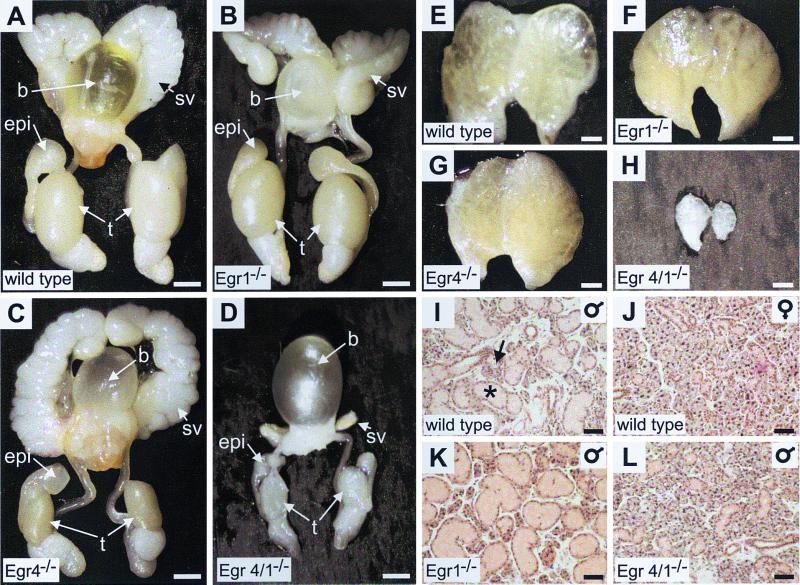FIG. 2.
Egr4-Egr1-deficient mice have an androgen insufficiency phenotype that is not present in mice deficient in either single gene. Phenotypic analysis of androgen-dependent organs in the adult genitourinary system (A to D), preputial pheromone gland (E to H), and submaxillary gland (I to L) are shown. (B and F) In Egr1-deficient mice, seminal vesicles, epididymis, prostate, and preputial glands are similar to adult wild-type organs (A and E). (C) In adult Egr4-deficient mice, only the testes weighed less (43% of wild-type weight) due to disrupted spermatogenesis as has been previously described (19). Other androgen-dependent organs, including seminal vesicles (C), epididymis, prostate, and preputial glands (G) are similar to wild-type organs (A and E). However, in Egr4-Egr1-deficient mice, the testes weighed 24% of the wild-type weight and the seminal vesicles (D), prostate, epididymis, and preputial gland (H) were markedly atrophic. (I to L) In mice, the seromucinous submaxillary gland has a sexually dimorphic glandular architecture with a serous component that is androgen dependent. Thus, the morphology of the submaxillary gland is related to serum testosterone levels such that wild type male glands (I) have a prominent serous (asterisk) and less prominent mucinous (arrow) component, whereas in wild-type females (J), the serous component is atrophic due to low circulating levels of androgens. Adult male Egr1- or Egr4-deficient mice (K) (latter not shown) had a glandular architecture similar to that of wild-type males (I). However, Egr4-Egr1-deficient adult male mice (L) had a glandular architecture indistinguishable from that of wild-type females (J), consistent with low serum androgen levels. (A to E, bar = 2.5 mm; E to H, bar = 1 mm; I to L, bar = 100 μm).

